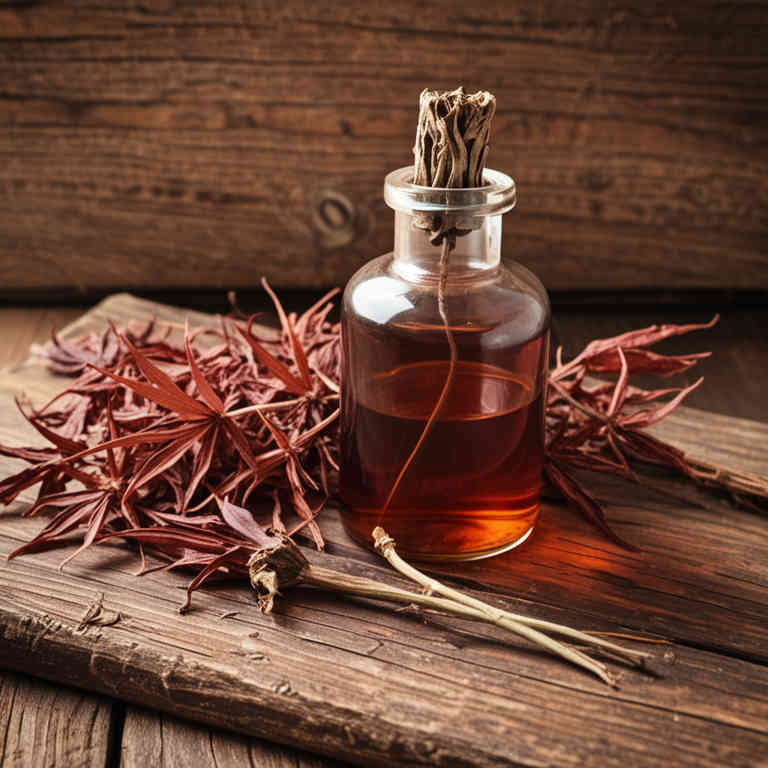Rheum palmatum tincture for medicinal use

Rheum palmatum tincture is a concentrated herbal preparation made from the roots of the rhubarb plant, which is native to Asia.
It is commonly used in herbal medicine for its strong laxative properties and its ability to support digestive health. The tincture is often employed to treat constipation and to cleanse the intestines. It may also be used in traditional practices to address skin conditions and inflammatory issues.
Due to its potency, it is typically used under the guidance of a qualified herbalist or healthcare provider.
Uses
Rheum palmatum tincture has been used to treat digestive disorders, skin conditions, and inflammatory diseases for centuries.
Historically, it was valued in traditional Chinese medicine for its purgative properties and its ability to detoxify the body. In traditional use, it was often applied externally for wounds and rashes, and internally for constipation and liver ailments. Modern applications include its use in topical treatments for eczema and psoriasis, as well as in formulations for digestive support.
However, due to its potent effects, it is typically used under medical supervision to avoid adverse reactions.
Benefits
Rheum palmatum tincture has health benefits such as supporting digestive health, reducing inflammation, and promoting detoxification.
It is traditionally used to alleviate symptoms of constipation and irritable bowel syndrome due to its mild laxative properties. The tincture may also help in managing skin conditions like eczema and psoriasis because of its anti-inflammatory and antimicrobial effects. It is believed to support liver function and aid in the elimination of toxins from the body.
However, it should be used with caution and under the guidance of a healthcare professional to avoid potential side effects.
Constituents
Rheum palmatum tincture active constituents include anthraquinones, glycosides, tannins, and alkaloids.
These compounds are responsible for the plant's laxative and anti-inflammatory properties. Anthraquinones, such as emodin and chrysophanol, are primarily responsible for its bowel-moving effects. Tannins contribute to its astringent qualities, while alkaloids may support digestive health.
This tincture is traditionally used to relieve constipation and promote gastrointestinal wellness.
Preparation
To make Rheum palmatum tincture, first gather fresh or dried Rheum palmatum root, ensuring it is clean and free from debris.
Next, place the root in a clean glass jar and cover it completely with a high-proof alcohol such as ethanol or vodka. Seal the jar and let it sit in a dark, cool place for 4 to 6 weeks, shaking it gently every few days to ensure even extraction. After the infusion period, strain the liquid through a fine mesh or cheesecloth to remove the plant material.
Finally, store the tincture in a dark glass bottle in a cool, dry place, away from direct sunlight.
Side Effects
Rheum palmatum tincture may lead to gastrointestinal upset, including nausea, vomiting, and diarrhea, due to its strong laxative properties.
It can also cause dehydration and electrolyte imbalances if used excessively or for prolonged periods. In some cases, it may irritate the stomach lining, leading to abdominal pain or cramping. Long-term use may result in dependency or reduced bowel function.
Individuals with sensitive digestive systems or existing gastrointestinal conditions should use this preparation with caution.